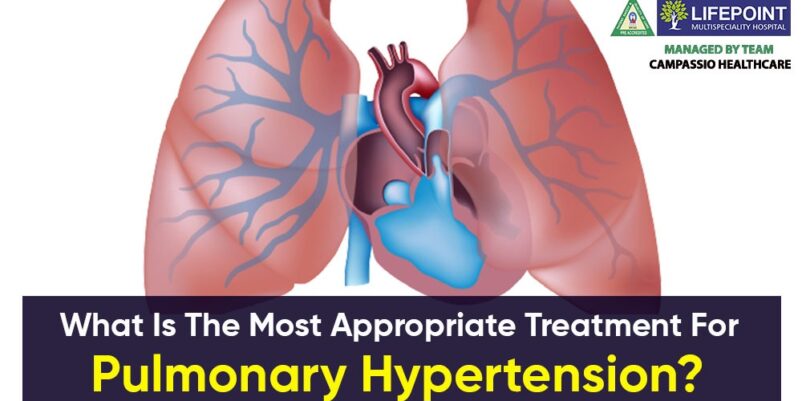Pulmonary hypertension is a medical term for excessive blood pressure that affects the right side of your heart and the arteries in your lungs.
When these arteries and veins stiffen, and narrow, blood flow to the lungs slows. As a result, your heart must pump blood with higher force. This exertion weakens the cardiac muscles, which may eventually cause the heart muscles to fail.
The body does not obtain an adequate supply of oxygen because your lungs become incapable of supplying enough oxygen due to this illness.
However, there are currently numerous therapy options accessible for people suffering from pulmonary hypertension. As a result, by following your doctor’s advice, you can expect to minimise the severity of your symptoms.
How can pulmonary hypertension be prevented?
Pulmonary hypertension is classified into five types based on its aetiology.
Group 1:
Among the causes are:
- Idiopathic PAH (Unknown cause)
- PAH that is inherited
- Congenital Heart Defect
- HIV infection, cirrhosis (chronic liver disease), and connective tissue problems can result from the use of some prescription diet medications or illegal narcotics such as methamphetamine.
Group 2:
Pulmonary hypertension as a result of left-sided heart disease
Among the causes are:
- Aortic valve or mitral valve disease is left-sided heart valve disease.
- Failure of the lower left chamber of the heart
Group 3:
Pulmonary hypertension is a result of a lung disease
Among the causes are:
- Fibrosis of the lungs
- Long-term high-altitude exposure
- Chronic obstructive pulmonary disease (COPD) (COPD)
- Sleep apnea (obstructive sleep apnea)
Group 4:
Chronic blood clots cause pulmonary hypertension.
Among the causes are:
- Blood clots in the lungs that have been present for a long time
- Other clotting issues
Group 5:
Various medical problems cause pulmonary hypertension.
Among the causes are:
- Blood illnesses such as essential thrombocythemia and polycythemia vera are examples of blood disorders.
- Sarcoidosis and vasculitis are examples of inflammatory diseases.
- Glycogen storage disease is one example of a metabolic condition.
- Diabetic kidney disease
- Tumours obstructing the pulmonary arteries
How can pulmonary hypertension be detected?
At the beginning of the medical problem, you may not notice any signs of pulmonary hypertension. As a result, it is difficult to diagnose for several months unless the symptoms become apparent. The following are some of the most common symptoms of this condition:
- Breathing difficulties while working or relaxing.
- Tiredness or a loss of energy
- Palpitations or pain in the chest.
- I was feeling dizzy, which could lead to fainting.
- Ankle and leg oedema progressively progresses to the abdomen.
- An increase in heart rate and pulse rate is sudden.
- Lips and face skin have a pale bluish tinge.
In what ways may pulmonary hypertension worsen?
- Age: Age is a significant risk factor for this disease. People between the ages of 30 and 60 are at a higher risk. Patients over 65 who suffer from this condition are more likely to have problems.
- Ancestral history: If someone in the family has pulmonary hypertension, it will likely be handed down to the next generation.
- Higher altitude location: If you have lived in a higher altitude place for an extended period, you may get this disease gradually.
- Obesity: Excess body weight may also increase the risk.
- Medication: Some medications used to treat obesity or depression can have adverse side effects.
- Drug-addiction
- Exposure to Asbestos: Another risk factor for this condition is long-term asbestos exposure.

